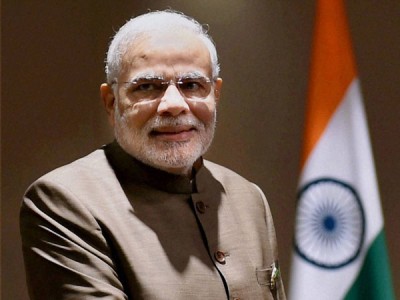After Brazil, India Might be the Next BRICS Country Invited to Join NATO

Trump is poaching BRICS countries one by one, first extending an offer to Brazil to become a “Major Non-NATO Ally” and now a bipartisan group of American lawmakers wants him to do the same with India, a proposal that by its very nature proves that New Delhi was lying all along about wanting to “multi-align” between Great Powers while it was really just repeating the platitudes that the Russian “deep state” desperately needed to hear in order to be naively deceived while this game-changing pivot was taking place before their very eyes.
No sooner had Indian “thought leaders” just left Moscow after participating in a landmark “trust-building” conference hosted by the prestigious Valdai Club did the news emerge that a bipartisan group of American lawmakers proposed that the US designate India as a “Major Non-NATO Ally” (MNNA), contradicting whatever “reassurances” those “experts” gave their Russian hosts that India was wholly committed to its “neutral” policy of “multi-alignment” between Great Powers. If successfully promulgated into law, then India would be the second BRICS country invited to enter into an official strategic partnership with NATO after Brazil was offered the opportunity to become a MNNA during Bolsonaro’s visit to DC last month. The hyperlinked piece in the last sentence connects to an article that I wrote at that time that also debunks the myth of BRICS, which the Alt-Media Community imagines to be some sort of legendary superstructure for dismantling the so-called “New World Order” even though the reality is a lot less “sexy”.
One by one, Trump is poaching the BRICS countries and reducing the five-member bloc to its three-member RIC precursor prior to stripping it down to its RC core. The writing was on the wall for years that this was in the process of happening and I initially drew attention to it in a piece from May 2016 asking “Is India Now A US Ally?” in the run-up to the conclusion of the LEMOA deal that allows the US to use all of India’s military facilities on a case-by-case “logistical” basis. The Indophile lobby all across the world and especially in Russia vehemently insisted that nothing of the sort was happening, being either cringingly naive or deliberately deceptive but with the end result being that many of Moscow’s decision makers were misled into trusting India despite New Delhi obviously preparing for a game-changing pivot before their very eyes. Proverbially speaking, “the cat’s out of the bag” with the new US legislative proposal and it’s clear to see what India was up to this entire time.
The timing of this initiative couldn’t have been better for Prime Minister Modi since it might boost his reelection prospects during the ongoing month-long electoral process and serve as a “good cop” counterpart to the US’ recent “bad cop” one of calling his government out for lying about supposedly downing a Pakistani F-16 during the famous February dogfight. From the American perspective, clinching this accord could lock India into its military-industrial complex ecosystem and accelerate the country’s redirection away from Russia and towards the West in this respect, powerfully undermining the “credibility” of its claims to “multi-alignment” and revealing them to have been nothing more than “wishful thinking” rhetoric purposely designed to deceive their intended Russian audience. The belated but inevitable realization of this fact will widen Russia’s “deep state” fault lines and speed up the pace with which the influence of Kabulov’s “Progressives” replaces that of the Indophile “Traditonalists” while also more quickly catalyzing a comprehensive breakthrough in the country’s bilateral relations with the global pivot state of Pakistan.
*
Note to readers: please click the share buttons below. Forward this article to your email lists. Crosspost on your blog site, internet forums. etc.
This article was originally published on Eurasia Future.
Andrew Korybko is an American Moscow-based political analyst specializing in the relationship between the US strategy in Afro-Eurasia, China’s One Belt One Road global vision of New Silk Road connectivity, and Hybrid Warfare. He is a frequent contributor to Global Research.

